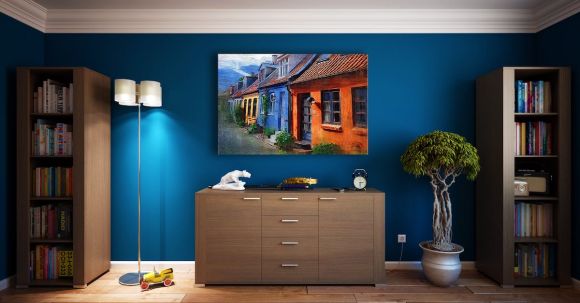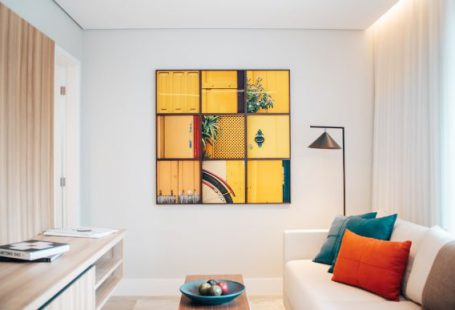Patterns can add depth and personality to a living room, but many people find it challenging to mix and match them effectively. However, with a bit of knowledge and creativity, you can create a harmonious and visually appealing space that reflects your personal style. In this article, we will explore some tips and tricks on how to mix and match patterns in living room decor.
Understanding the Basics of Patterns
Before we dive into the world of pattern mixing, it’s important to understand the basics. Patterns can be categorized into three main types: geometric, organic, and abstract. Geometric patterns consist of repetitive shapes like stripes, chevrons, and polka dots. Organic patterns, on the other hand, are inspired by nature and include floral prints and animal motifs. Abstract patterns are more artistic and can be anything from splashes of color to brush strokes.
Start with a Dominant Pattern
To create a well-balanced look, start by selecting a dominant pattern for your living room decor. This pattern will serve as the foundation and set the tone for the space. Choose a pattern that you love and that reflects your style. It could be a large floral print or a bold geometric design. Once you have your dominant pattern, you can build the rest of the room around it.
Mixing Patterns of Different Scales
When mixing patterns, it’s crucial to consider the scale of each pattern. To achieve a harmonious look, combine patterns of different scales. For example, pair a large-scale floral print with a smaller geometric pattern. This contrast will create visual interest without overwhelming the space. Additionally, mixing patterns of different scales helps to create a sense of balance and prevents the room from appearing too busy.
Using a Color Palette as a Unifying Element
To tie different patterns together, use a cohesive color palette. Select a few key colors from your dominant pattern and incorporate them into the other patterns in your living room decor. This will create a sense of harmony and ensure that the patterns complement each other. For example, if your dominant pattern has a blue floral print, you can introduce blue accents through throw pillows, curtains, or artwork.
Playing with Texture
Adding texture to your living room decor can elevate the overall look and feel of the space. Consider incorporating textured fabrics, such as velvet or linen, into your pattern mixing. Texture adds depth and visual interest, making the patterns stand out even more. For example, you can pair a velvet chevron patterned pillow with a linen striped throw blanket. This combination of patterns and textures will create a layered and inviting space.
Accessorizing with Solid Colors
To prevent your living room from feeling too overwhelming, balance the patterns with solid colors. Use solid-colored furniture, such as sofas or armchairs, as a neutral backdrop for your pattern mixing. Additionally, incorporate solid-colored accessories, like rugs or curtains, to create visual breaks and allow the patterns to shine. This approach will create a cohesive and visually pleasing living room decor.
In conclusion, mixing and matching patterns in living room decor can be a fun and creative way to personalize your space. By understanding the basics of patterns, starting with a dominant pattern, mixing patterns of different scales, using a color palette as a unifying element, playing with texture, and accessorizing with solid colors, you can create a visually appealing and harmonious living room that reflects your unique style. So go ahead and embrace the world of pattern mixing and let your creativity shine!






